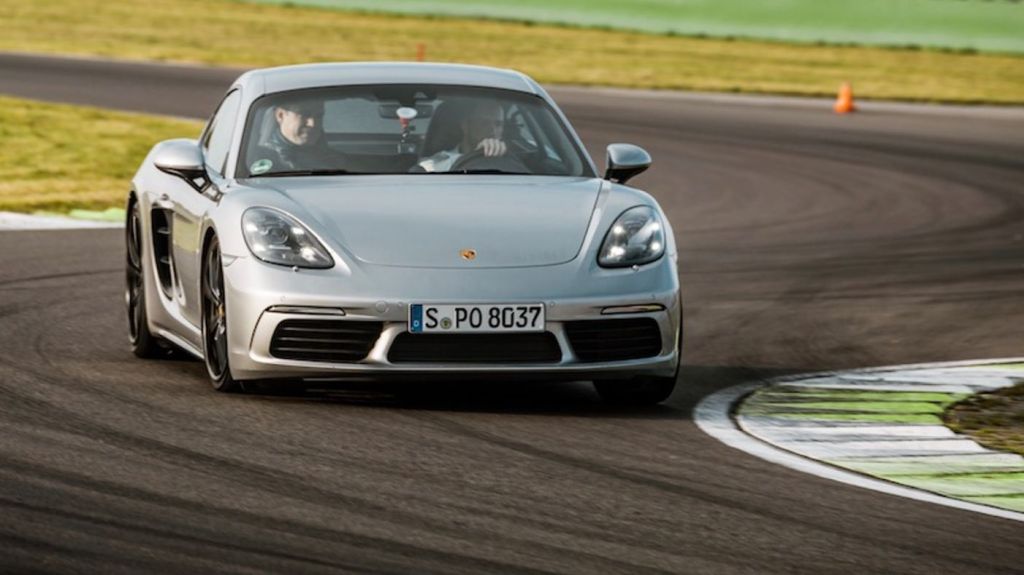Risk vs reward: What to consider when buying a used sports car
By DPA | 28 October 2023
BERLIN: Many people dream of owning a sport car, but the high price puts it outside the reach of all but the well-heeled.
After all, even in Germany a new Porsche 718 Cayman will cost at least €56,000, as does a BMW M2. Even a hot hatch like a VW Golf GTI costs at least €37,000.
If those are too pricey, there’s always the used car market. But there are a few things to know before diving in.
A good time to buy a used sports car is when the vehicle is between 13 and 17 years old, says Frank Wilke of the market observer firm Classic Analytics.
At that point the cars are too old for the used car market and not old enough for classic car enthusiasts. "After 17 years at the latest, sports cars rise in value, brands like BMW and Porsche faster, other brands slower. But they also go up," Wilke says.
Steer clear of wild colours
Wilke sees classic colour combinations such as silver or red paint and black leather interiors as having the potential for value appreciation. Prospective buyers should stay away from unusual combinations. "Their resale value is often poor," he says.
Cars with manual transmissions have meanwhile proven to be more stable in value than automatics.
Which sports cars are most popular? Wilke lists the Audi TT, the BMW M3 E90, Chevrolet’s Camaro and Corvette, the Ford Mustang, the Nissan 350Z, the Peugeot RCZ, the Porsche Cayman and the Toyota Celica.
His insider tip is the first Porsche Cayman from 2005. That was launched slightly later than the open-top Boxster and had fewer teething problems.
With 245 hp, the Cayman isn’t exactly a muscle car, but it's lively and nippy compared to the more expensive 911 from the same year. Well-maintained models cost around €20,000 in Europe.
In a similar price bracket are the Nissan 350Z and the BMW 1 Series Coupé, according to Malte Tom Buettner, a used car expert with Auto Bild magazine. "These cars have enough power, are still affordable, and give a lot of driving pleasure," he says.
He also recommends two roadsters, the Mercedes SLK and the Mazda MX-5: "Both models drive great and are reliable, plus are breezy in the summer," he says.
Buettner says that before buying you should also pay close attention to the previous owner, including their appearance, age, and attitude to car care: "From this, you can often tell how the car was used and how it was handled."
Keeping repair costs down
In Buettner’s opinion, follow-up costs for sports cars can only be reduced by buying cars without a repair backlog. In addition, the costs are usually lower at an independent workshop that specialises in the make or model than at a brand-name garage.
"The simpler and weaker the model, the cheaper the parts, maintenance, and insurance also turn out to be. However, the driving experience then also tends to be less thrilling," he says.
To ensure that the purchase of a used sports car doesn’t quickly lead to disappointment, Thorsten Rechtien from TÜV, a technical inspection agency in Germany, advises getting a detailed check of the chassis, engine, and transmission before buying.
"With particularly sporty driving, tyres wear out quickly, so prospective buyers should closely examine the condition, such as tread depth and running pattern," he says. The brakes also suffer under heavy use and should be checked out by a specialist.
Tags
Autos News
Reviews

First drive with the 2025 Hyundai Tuscon and Santa Fe: Seoul...

5.8
Kymco AK550 Premium: Smart easy rider

BYD Seal 6 Premium: Sweet deal, generous kit, sensible prici...

8.7
Mazda CX-80 2.5G PHEV AWD High Plus: Upmarket upgrade

Proton X50 Flagship: Tuned for success

6.6
Triumph Trident 660: Beautifully balanced package

8.4
Mercedes-AMG GLA 35 4Matic: Never a dull moment

Lamborghini Urus SE: Ultimate control
Videos

Free & Easy Media Test: Latest Proton X50 Flagship to Kuanta...

Zeekr Space Sunway City Video

Honda Civic Type R Ultimate Edition: Last 40 Units for Europ...
